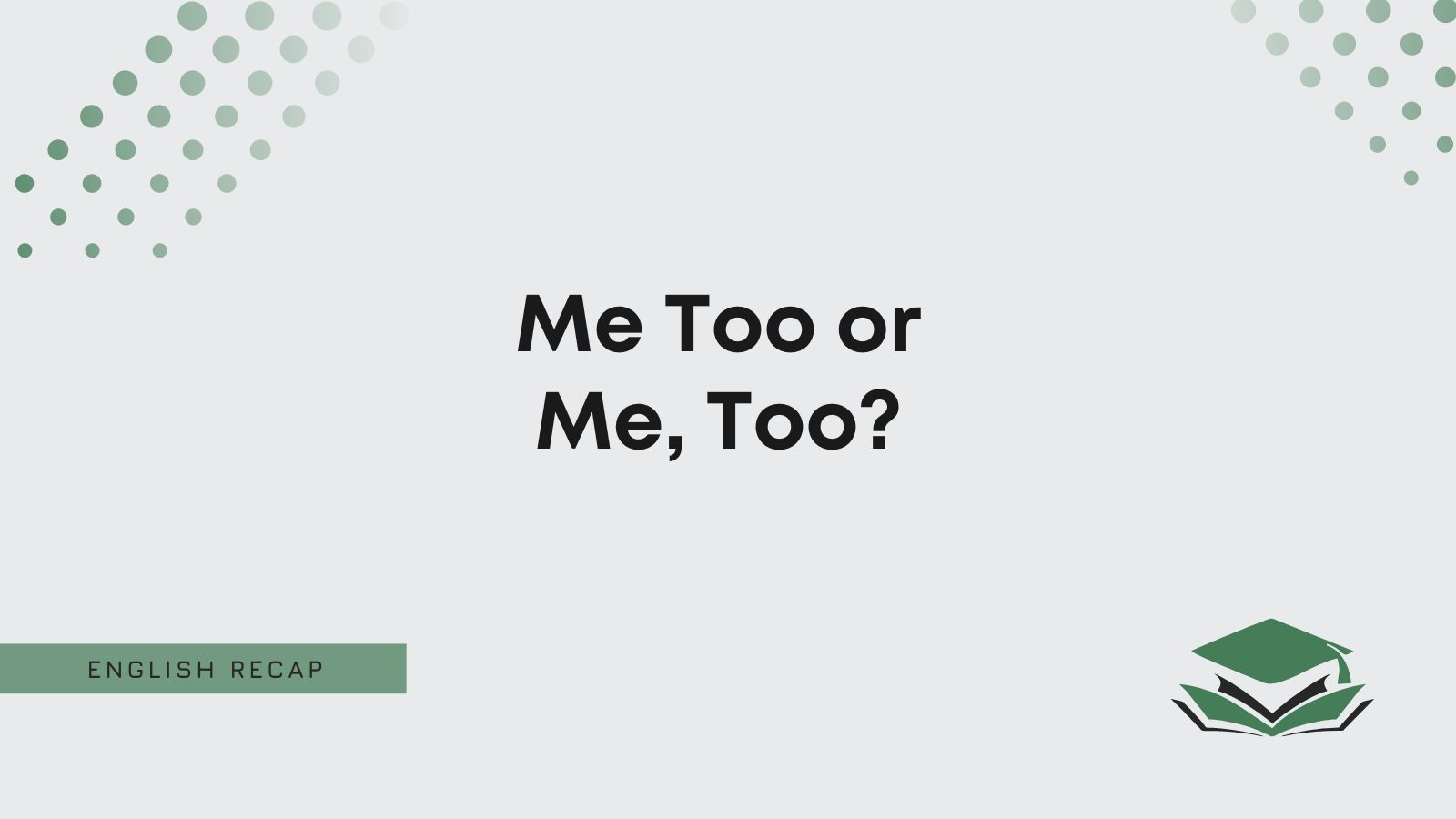“Me, too” with a comma is the correct grammar. However, people also commonly use “me too” without a comma and do not generally add a pause when speaking. Therefore, it is acceptable to use “me too” without commas as it is mostly used in informal writing.
When writing formally and you want to indicate that you are “the same” in response to someone else’s statement, you should always use “me, too” with a comma.
- I want to eat out tonight.
- Me, too. I don’t want to cook.
Also, you can use “me, too” in a way that is not in response to someone else. Here, it indicates you are doing the same.
- She isn’t coming to work tomorrow, and the same applies to me, too.
However, “me, too” often comes up in conversations and informal writing. On these occasions, it is unlikely that people would include a comma or a pause.
- I hate broccoli.
- Me too.
Continue reading the rest of the page to find out more about how to use punctuation with the statement “me, too.”
Me, too
“Me, too” is the grammatically correct version as you must include a comma before the word “too.”
You use the phrase “me, too” to signal agreement with a feeling, action, or state.
- I want to go to the mall later.
- Me, too. I need to buy some new shirts.
Furthermore, a common mistake that people make with the statement “me, too” is that they use it with negative verbs. In these cases, you should use “me, neither” instead of “me, too.”
- I don’t like that guy.
- Incorrect: Me, too. He is not trustworthy.
- Correct: Me, neither. He is not trustworthy.
Me Too
The term “me too” is slightly more informal than “me, too.”
However, it is acceptable to use in casual conversations and messaging.
When writing a longer sentence, it is often better to use a comma to separate the sentence a little.
However, as a short snappy response, “me too” without commas is widespread.
- I bought James a birthday present.
- Me too.
- I am so tired. I need a vacation!
- Me too!

